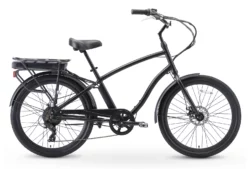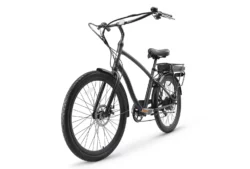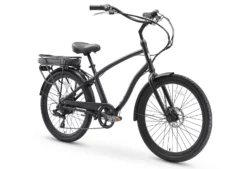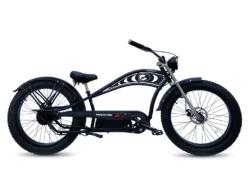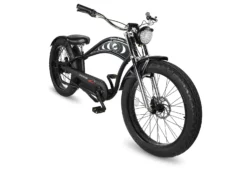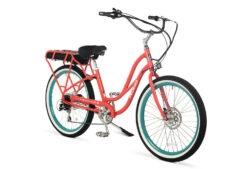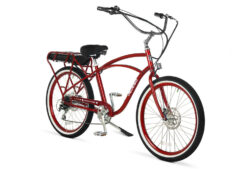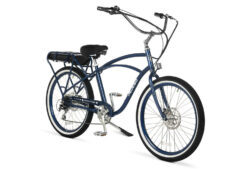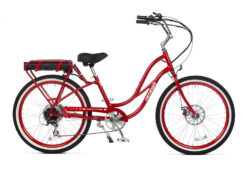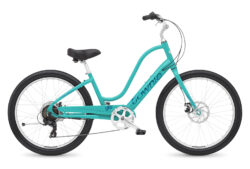If you’re on the lookout for a simple introduction to riding an electric bike, then the beach cruiser e-bike could be the ideal option. As the name implies, cruiser bikes are designed for comfort and enjoyable rides around towns, parks, and, especially, beaches.
Cruiser bikes tend to be larger, fitted with comfortable seats, and heavier than most other e-bikes. The rider sits upright and navigates the vehicle with curved handlebars, and the bike has few gears if any at all.
Reasons to Consider an Electric Beach Cruiser
On the positive side, most cruiser e-bikes are ideal for laid-back bike rides down to the beach or running a few errands around town. However, most cruisers are less suited to climbing hills, as the effort required will eat up your battery charge faster than usual. The cumbersome body of the bike makes it more challenging to navigate tight spaces or winding trails as well.
That said, cruiser e-bikes tend to be less expensive than other vehicles on the market. If affordability is a critical factor in your decision to purchase an electric bike, along with comfort and ease of use, then a beach cruiser is likely to tick all your boxes.
With this classic bicycle style now available in electric mode, we’ll run you through a few of the best electric beach cruiser bikes on the market below.
Ultimate Comfort Beach Cruiser E-Bike
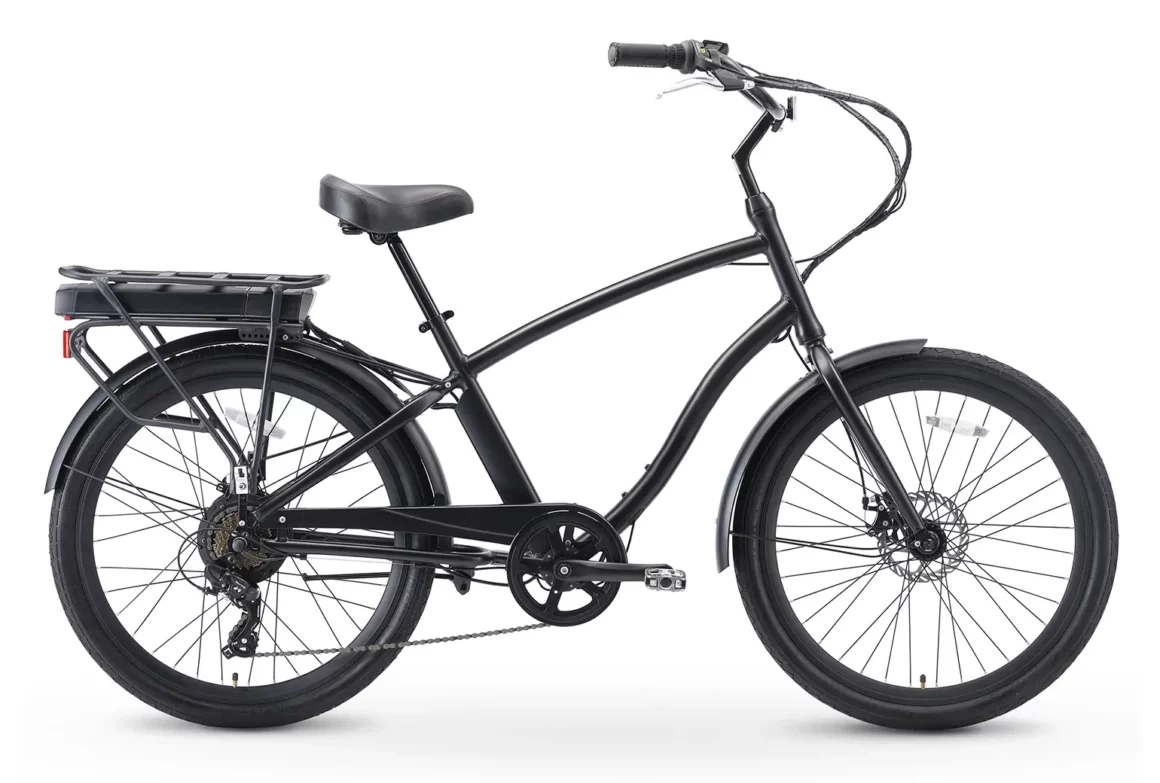
EVRYjourney 500W
Highlights
- Ergonomic design delivers maximum comfort
- Top speed of 28 mph with pedal assist
- Battery will take you up to 40 miles
Bottom Line
SixThreeZero claims that the EVRYJourney is the “most comfortable bicycle e-bike ever.” That’s thanks to what the company describes as an “ultra-comfortable ergonomic frame design,” which aims to keep you in an upright and relaxed position to reduce strain on your body. It features classic cruiser-style swept-back handlebars that are ideal for effortless, laid-back casual riding adventures.
The EVRYJourney can also help you hit a top speed of 28 mph with a maximum range of 40 miles thanks to a 500W motor and 500Wh battery. That’s assisted by front and rear cable-actuated disc brakes to bring you to a halt quickly. This comfortable ride is boosted by 26” x 1.95” tires that provide a cushioned and stable ride.
SixThreeZero EVRYJourney Accessories
The EVRY Journey features a small display built into the handlebars that provides information like your speed and level of pedal assist power. But SixThreeZero offers a range of other accessories, including:
- Bags and panniers
- Baskets
- Batteries and chargers
- Bells
- Child seats
- Computers
- Fenders
- Water bottle cages
Things to Consider
Beach cruiser e-bikes are designed to look cool, but SixThreeZero has added maximum comfort to every ride with the EVRYJourney. A starting price of $1,999 makes the EVRYJourney good value, but not the most affordable on this list.
Most Stylish Cruising Beach Cruiser E-Bike

Micargi Cyclone 2.0
Highlights
- Chopper-style design that oozes coolness
- Motor delivers top speeds of up to 23 mph
- Cruising range of up to 40 miles
Bottom Line
If cruising the seafront in style is your No. 1 priority for purchasing a beach cruiser e-bike, then look no further than the Micargi Cyclone. The e-bike oozes coolness with its classic chopper design style, matte black finish, retro steel chrome handlebars, and a choice of black or red rims.
Possibly the most eye-catching feature of the Cyclone is the faux “gas tank” designed into its very long frame. It also packs decent power courtesy of its 500W Bafang motor, which can take you up to a maximum of 23 mph aided by five pedal assist levels. And its 48V/11.6Ah Samsung lithium-ion battery will help you cruise to your heart’s content for up to 40 miles.
Micargi CYclone Accessories
The Cyclone comes with fenders and headlights, which will help you ride comfortably and safely at night. However, there’s a lack of Micargi accessories available to customize your Cyclone.
Things to Consider
Micargi designed the Cyclone to, in their words: “Turn heads and drop jaws wherever you ride.” And it’s safe to say that you’ll attract attention when cruising along beaches and seafronts on this stylish e-bike.
However, its highly durable hi-tensile steel frame and fat tires come with an inevitable weight penalty as the e-bike weighs in at a whopping 83 lbs. Also, the opportunity to look super cool as you cruise your local beach will set you back with a starting price of $2,450.
High-Performance Electric Beach Cruiser
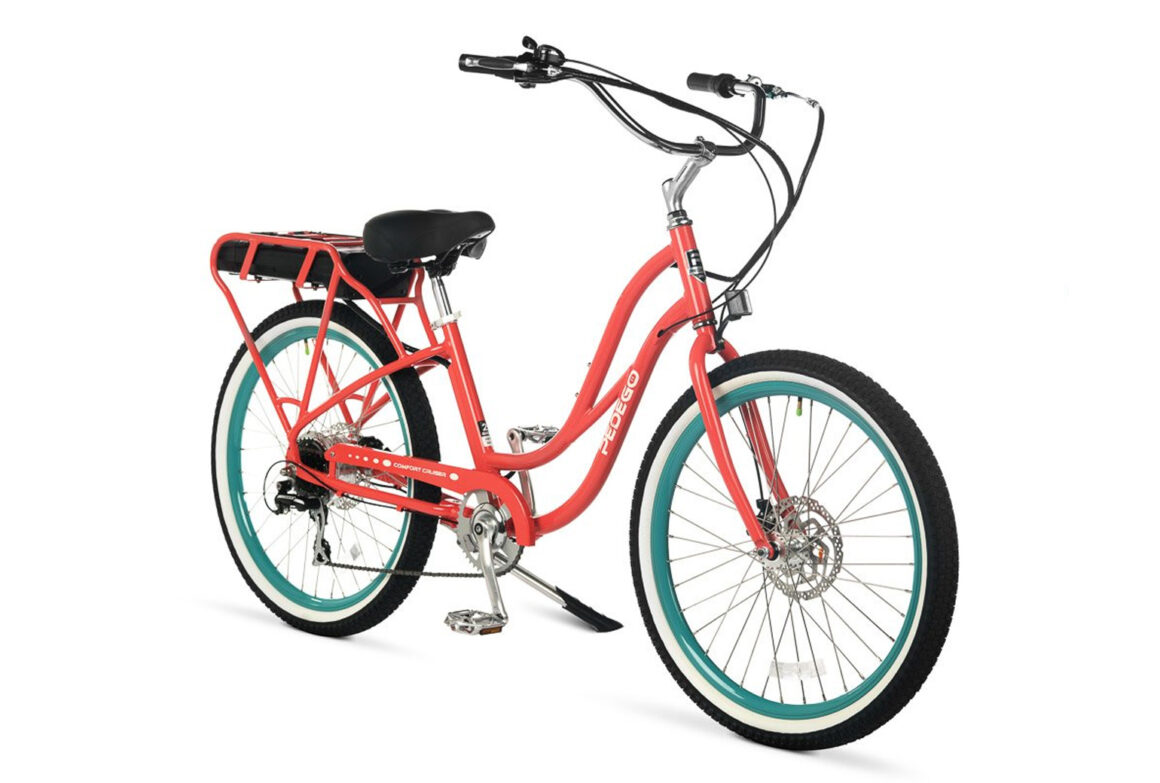
Pedego Comfort Cruiser
Highlights
- Packed with industry-leading technology, including Pedego’s PedalSense throttle
- Long-range cruising of up to 45 miles per charge
- Comfortable, smooth, and stylish beach cruising
Bottom Line
The Pedego Comfort Cruiser packs the latest technology into an e-bike that’s comfortable, stylish, powerful, and a decent value.
The Comfort Cruiser’s headline feature is its proprietary PedalSense twist-and-go throttle technology, which automatically adjusts to the appropriate pedal assist level. It also includes a state-of-the-art 26-volt battery that will take you up to 45 miles per charge and offers rapid recharging.
The Pedego e-bike is powered by a quiet 500W motor, offers solid acceleration, and a top speed of 20 mph. That’s supported by Shimano BR-M375 mechanical disc brakes that provide intuitive, easy-to-use adjustability.
Pedego also offers the comfort you’d expect of a beach cruiser. You can cruise along in style with its relaxed, wide-set handlebars, soft cushioned seat, and seven-speed drivetrain that ensures easy pedaling and smooth shifting.
Pedego Comfort Cruiser Accessories
The Comfort Cruiser comes with a built-in 2.5” LCD display screen that offers several useful metrics alongside a USB port for you to charge your smartphone or other devices on the go. It also features an LED rear light powered by the battery. Additional accessories include a kickstand and a custom Pedego tool kit.
Pedego provides a wide range of customization with its accessories range:
- Bags ranging from insulated bags and handlebar bags to pet carriers
- Baskets
- Child seats
- Grips, pedals, and seats
- Bike locks
- Safety equipment like signal switches and torches
- Vehicle racks
Things to Consider
Pedego’s Comfort Cruiser offers the best of both worlds with a beach cruiser e-bike that boasts high performance and style. It provides premium quality components that will have you cruising seafronts at a decent pace for up to 45 miles per charge.
The Comfort Cruiser has a starting price of $1,995, which may appear a little steep but is excellent value for the quality and performance on offer. It’s not the most portable bike around, so it may not be the best option for commuters.
Good Value Electric Beach Cruiser
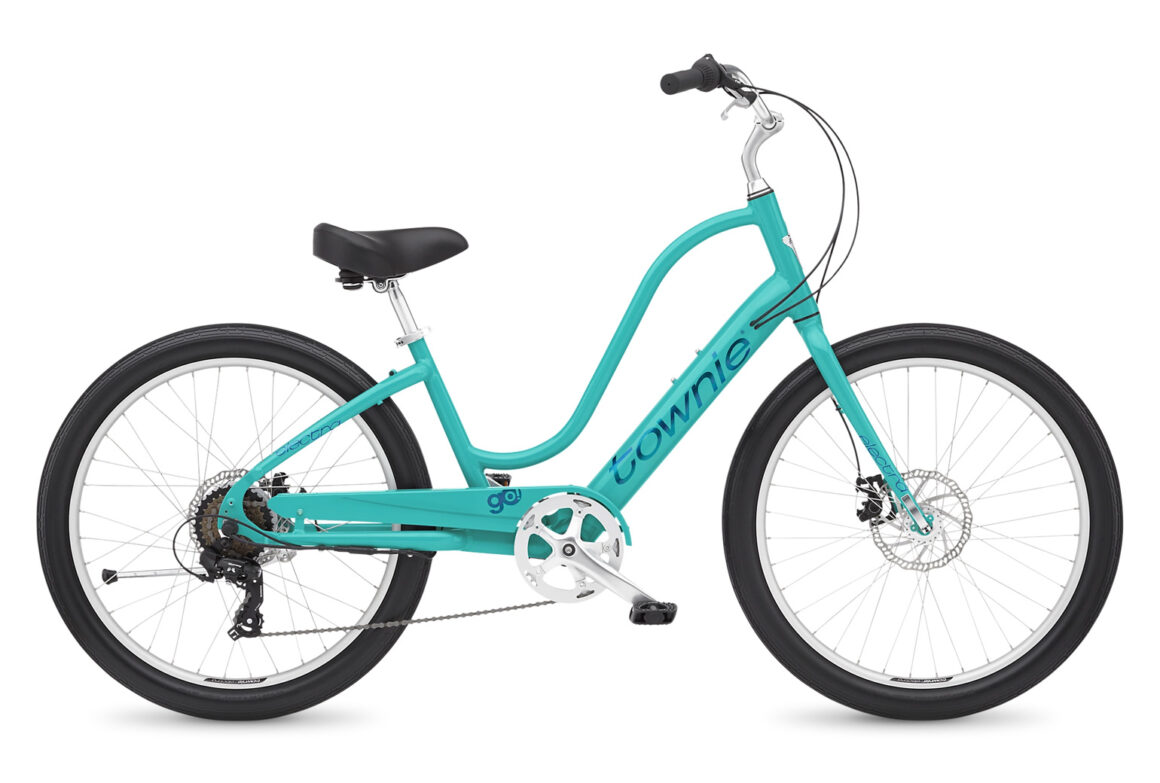
Townie Go! 7D Step-Thru
Highlights
- Solid power despite a lower-wattage motor
- Impressive maximum pedal-assisted range of up to 50 miles
- Comfortable ride courtesy of patented Flat Foot technology
Bottom Line
Riders looking for a long-range cruise along the seafront with a good-value e-bike should consider the surprisingly powerful Electra Townie Go! 7D.
The Townie Go! 7D is powered by a 250W rear hub motor that offers top speeds of 20 mph, which is solid considering its lower wattage than other e-bikes on this list. That’s complemented by 180mm mechanical disc brakes that ensure the ability to stop fast when you need it.
Electra offers a range of power modes that will affect the range of the e-bike. On lower levels of pedal assist, the Townie Go! 7D can stretch up to 50 miles, while at max power it’ll take you around 24 miles.
The Townie Go! 7D also delivers on comfort led by Electra’s patented Flat Foot Technology, which ensures superb control and stability on even tricky terrains like unpredictable beaches. Its appealing design enables a laid-back, upright, and comfortable riding position.
Townie Go! 7D Step-thru Accessories
One area where the Electra e-bike falls short is built-in accessories, such as the lack of a headlight. However, Electra does offer add-on accessories, including:
- Aluminum alloy rear rack
- Front tray
- Rear-mount kickstand
- Alloy fenders
- Trunk bags
- Ringer bell
Things to Consider
Electra’s Townie Go! 7D is an ideal e-bike for casual cruises along the seafront and tackling trickier terrains. It also offers a potential range of up to 50 miles, which outstretches any other bike on this list.
The Townie Go! 7D offers a good option for electric bike newcomers, with its starting price of $1,499 coming in lower than other similar beach cruisers.

